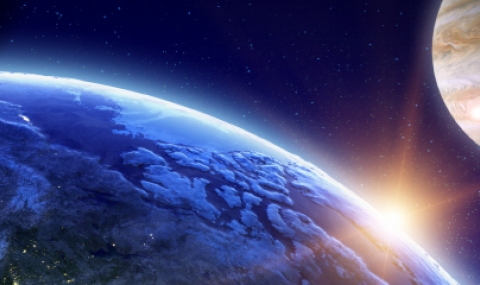JUICE: JUpiter ICy Moon Explorer
Agency: ESA
Launch: April 2023
In 2012 the European Space Agency (ESA) selected the JUICE (The JUpiter ICy Moon Explorer) mission to be the next flagship space mission of ESA. This will be ESA's first space mission to the outer solar system. JUICE will perform a tour of the Jovian system for two and half years including close flybys of Europa and Callisto and finally setting into an orbit around Ganymede. Among the selected instruments is 3GM (Gravity and Geophysics of Jupiter and the Galilean Moons, 3GM in short), which addresses the scientific goals of the mission pertaining to gravity, geophysics and atmospheric science with radio occultations. The 3GM payload is composed of two separate and independent elements, namely a high performance Ka-band transponder (KaT), and an Ultra-Stable Oscillator (USO). In partnership with AccuBeat Ltd. and the Israeli Space Agency we are developing the USO in Israel. As PI of the USO we are leading the planning, implementation and analysis of the JUICE occultation measurements.
Juno
Agency: NASA
Orbit: 2016 - present
Following a 5 year journey, the Juno mission has been in orbit around Jupiter since July 2016, performing a close 4000 km flyby every 53 days. Juno's mission is to study the atmosphere, interior and magnetosphere of the planet. I have been a member of the Juno Science team since 2009, focusing on revealing the structure and deep dynamics of Jupiter based on the Juno gravity measurements. Using north-south asymmetries in Jupiter's measured gravity field we were able to determine the depth of Jupiter's dynamic atmosphere. Currently we are working on determining the mass of Jupiter's Great Red Spot using the gravity field, and coupling Juno's magnetic and gravity measurements to further constrain the dynamics within Jupiter.
Cassini
Agency: NASA
Orbit: 2004-2017
Cassini spent 13 years orbiting Saturn. In the mission's final phase it went into an eccentric orbit diving between the planets and its rings, allowing very accurate gravity measurements of the planet. I joined the Cassini RSS team in 2013, in order to use this gravity data to determine the depth of Saturn's atmospheric flows. We found these flows to be about 9000 km deep, extending down to the region where the electrical conductivity rises an the flow interacts with the magnetic field. The gravity measurements also allowed to determine Saturn's ring mass and rotation rate, confirming our earlier calculations of the rotation rate based on pre-Cassini gravity data.


